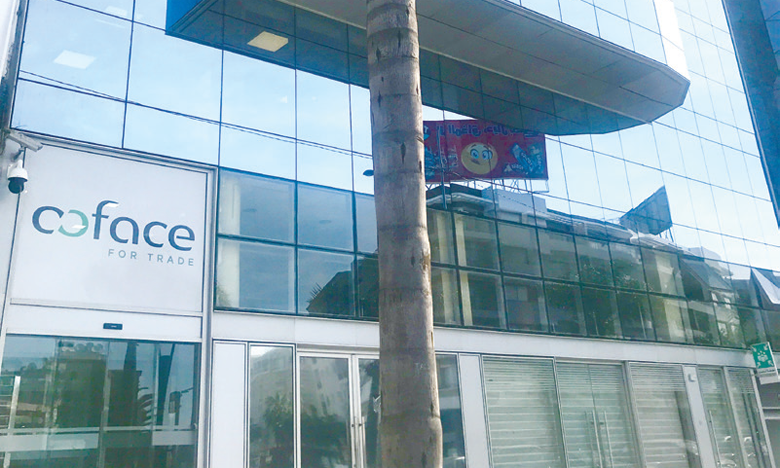Morocco’s Credibility Holds But Growth Constraints Persist
Coface maintains Morocco’s “B” risk grade as Eurobond spreads versus ^TNX and EMB remain tight; USDMAD=X stable and CL=F volatility contained; GDP growth near 4.5%, inflation below 1%, and reserves above USD 40 billion sustain investor confidence.

Coface’s decision to keep Morocco’s country risk at “B” affirms stability built on fiscal restraint, monetary discipline, and credible macro management. GDP grew 3.8% in 2024 and is projected at 4.5% in 2025, supported by agricultural recovery and industrial exports led by automotive and phosphate processing. Inflation has moderated below 1% year-on-year, the lowest in North Africa, after peaking above 6% in 2022.
The Bank Al-Maghrib maintains a policy rate of 2.25%, a real positive stance that suppresses imported inflation and stabilizes the dirham. The exchange-rate band of ±5% around the euro-dollar basket keeps currency volatility low while preserving external competitiveness. Public debt remains close to 70% of GDP, and fiscal deficits are narrowing from 4.1% in 2024 toward 3.9% in 2025 as tax reforms expand the base and subsidies are reprioritized.
Morocco’s external position strengthens its rating resilience. Foreign exchange reserves stand at just above USD 40 billion, equal to roughly six months of import cover, and the current account deficit has narrowed to 2.3% of GDP. Strong tourism inflows and high-value exports offset elevated energy imports. The managed currency regime and measured fiscal stance have compressed sovereign spreads, with Eurobond yields around 6.0–6.2% for 2031–2033 maturities — about 320 basis points above U.S. Treasuries (^TNX) and 150 bps below Egypt.
The dirham (USDMAD=X) trades stably, while oil (CL=F) remains the primary exogenous variable determining external balances. Market behavior confirms investor alignment with Coface’s judgment: steady pricing across Morocco’s sovereign curve and a low-beta profile relative to frontier peers.
The policy mechanism sustaining this stability integrates three channels. First, a credible inflation-targeting framework reinforces real-rate anchoring and reduces term premia. Second, fiscal consolidation — achieved through gradual subsidy reform and state-owned enterprise restructuring — limits domestic crowding-out effects and preserves liquidity for private borrowers.
Third, a diversified export base cushions terms-of-trade shocks. Automotive exports now exceed USD 14 billion annually, matching phosphates in value, while renewable capacity represents about 38% of installed power generation. Yet the growth model remains uneven: unemployment at 12.8% and youth unemployment at 36% expose the limits of industrial gains in translating into broad-based labor absorption.
The Casablanca Stock Exchange (MASI) mirrors this macro balance — steady rather than dynamic. Equity valuations remain compressed within a 4–5% trading band as bank earnings normalize and consumption lags. Credit growth at roughly 5% signals caution among corporates despite benign funding costs. Foreign direct investment inflows, averaging USD 4 billion annually, anchor Morocco’s capital account, concentrated in manufacturing and energy. The combination of stable inflows, prudent issuance, and an anchored exchange rate keeps the sovereign insulated from short-term market volatility.
In comparative context, Morocco’s macro configuration positions it closer to BB-rated economies than to speculative frontier peers. Unlike Tunisia or Egypt, which depend heavily on multilateral liquidity support, Morocco sustains external solvency through market access and domestic debt rollover capacity. However, the upgrade ceiling remains structural.
To advance beyond “B,” Morocco must lift non-agricultural growth above 4% sustainably, lower debt toward 65% of GDP, and raise employment intensity through SME formalization and capital-deepening reforms. Without that, the economy risks settling into a stability trap — fiscally disciplined but growth-constrained.
Global investors will monitor three quantifiable indicators over 2025–2026: the fiscal deficit’s descent toward 3.4% of GDP, external reserves above USD 38 billion despite oil volatility, and Eurobond spread compression of 50–75 bps versus the JPMorgan EMB index (EMB). If those metrics converge while inflation remains below 3% and real output above 4%, Morocco’s sovereign narrative will shift from resilience to credible upward transition. Failure to meet them would preserve the “B” grade as a sign of competent management under constraint rather than transformation.





